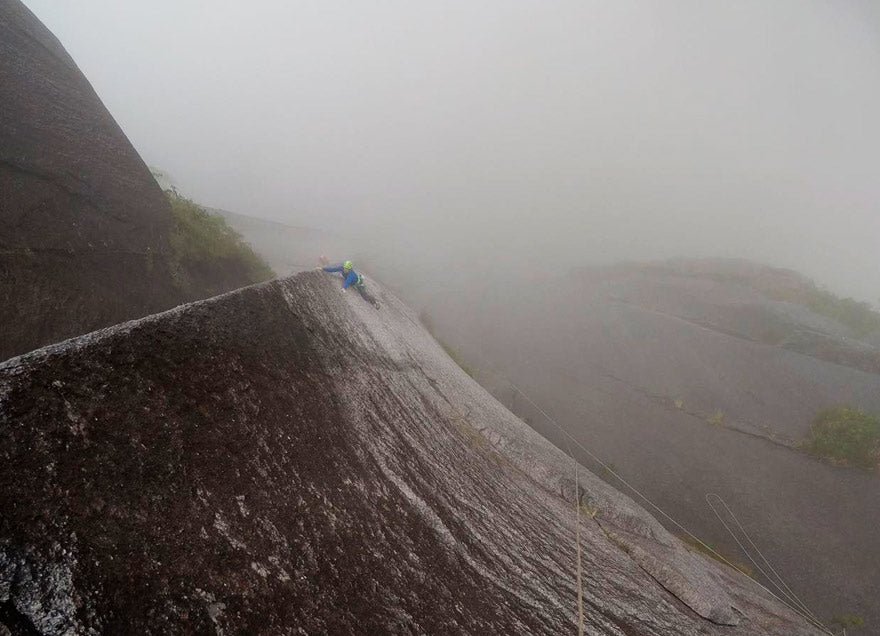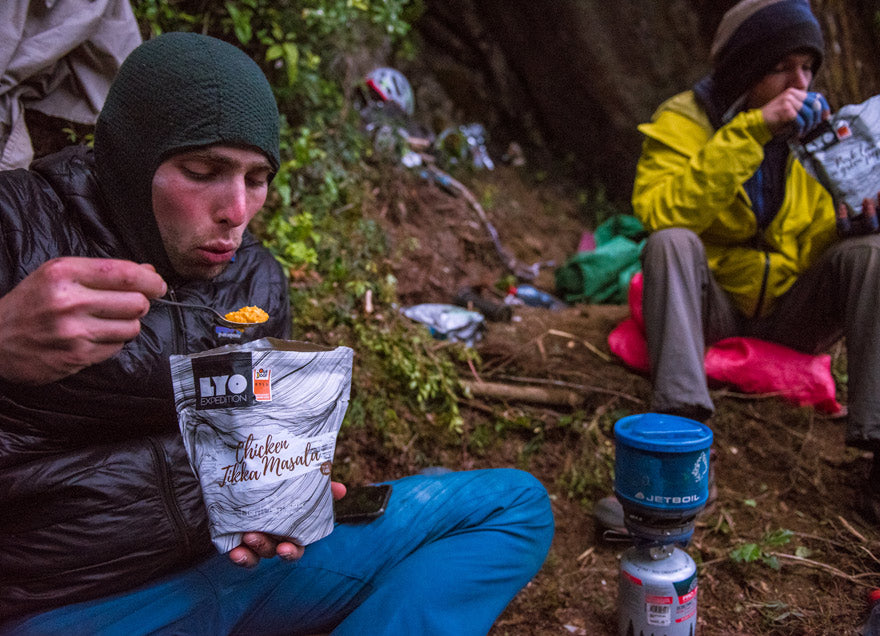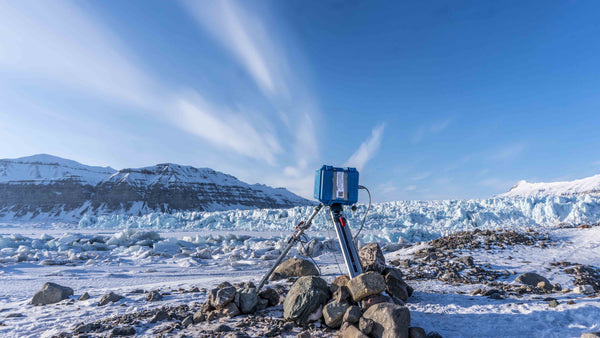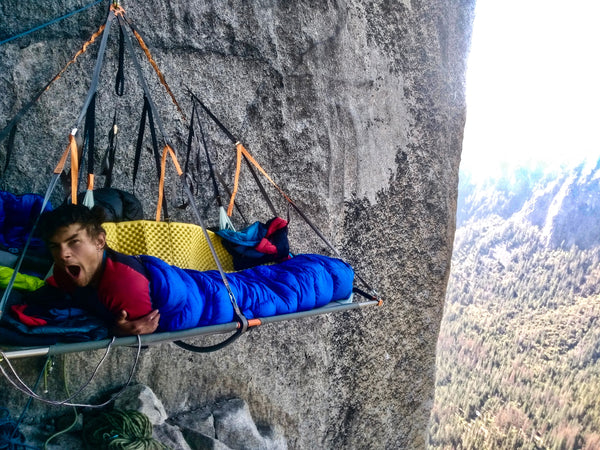The pursuit of the impossible

I’m sitting on our bushy bivy ledge, halfway up on the 750m high wall of La Junta, a lush jungle rock face in the Granite Big Wall paradise of Cochamo, Northern Patagonia. As I look out across the valley, the setting sun casts a fiery beam of light bouncing of the clouds causing an otherworldly glow in the sky.
I hear a crunch and turn to my left; the bushes shift from side to side and my climbing partner Ian arrives. It’s been another long day on the wall but we got through it. This is the 2nd season on the La Junta Project; we’ve been mostly bolting, cleaning and preparing, but that’s OK, it’s part of the process. What little free climbing we have done has opened our eyes to the incredible difficulty of the climbing; we’ve unearthed a project unlike any other in Patagonia, heck unlike any other in South America!!!
 Photo Drew Smith
Photo Drew Smith
When we aid climbed up the wall last year to establish the line I can remember envisaging free climbing these hard pitches; I could see they were certainly all possible, but putting it into practice would be a different game. It’s easy enough to sit on a skyhook, look at the holds in front of you and imagine pulling on them, but a different one altogether to actually take your body weight on them and initiate movement. I learned the hard way that what sometimes looks easy, isn’t always what it seems…

I can remember aiding my way up the incredible stem corner that we’ve affectionately named the “Peanut Corner” for it’s unique peanut-shaped formation. I thought to myself:
“All these holds are good. There’s a big crack there, that’s good. This undercut section seems OK. This ending is a bit slopey, but there are holds, shouldn’t be a problem…”
I naively suggested the grade of 8a+ (5.13c) thinking it didn’t look as hard as “Book of Hate” (8b/5.13d), a classic Yosemite stem corner I had climbed a couple of years ago. This year I went for the onsight of the “Peanut Corner” having only aided it the year before and done absolutely zero cleaning – I figured it would be good training for something?
The crack was filled with thousands of little rocky spikes that broke off easily when you weighted them, but in doing so they pricked and jabbed your skin. After 25m of shoving my hands in this crack I had totally shredded all the skin off the back of my hands and fingers… I was a bloody mess! Despite this I was eager to give this pitch a good go, so I battled on regardless and found myself getting closer to where I had thought the climbing got really serious!
I was stemmed out, smearing my feet on both faces of the open book corner; the left-hand side was better quality rock, the right-hand side was crumbling to bits… I could hear the right foot audibly crackling as though I had just stood on a packet of Rice Crispies. I managed to place my last bit of gear, a BD C3 (000) in the crack – it didn’t really bite that well and was only camming on one lobe. I pushed as hard as I could through my feet and made it another few metres above that last tiny cam before everything gave way and I came plummeting down onto it… it held!
Drew Smith, our photographer who had been capturing the whole thing through his lense had seen me place it and from his viewpoint could see how bad it really was. Not wanting to disturb my concentration he watched as I continued to climb, and was even more surprised than me that it held.

Turns out the climbing after the long and sustained corner crack is even harder. You have a choice to either go straight up into the stem corner as it peters out into squirmy/smeary hell, or go for the more secure but bouldery option out right on the overhanging fridges. Either way and you arrive at the final crux, an El Cap “Great Roof” style piece of climbing with the crack leading out left instead of right, but going at something like F7C? (V9?). All in all this pitch is seriously hard and I don’t know if I’ll ever be able to climb it, so I might just spend the rest of my life figuring it out?
 Photo Drew Smith
Photo Drew Smith
Something you will never know unless you go Big Wall first ascenting is the terrifying uncertainty of it all. Will it be possible? Will we get to the top? Will we free it? And this I feel is even more so amplified during a long term Big Wall project. This is my 2nd year on it and I’ve still not freed some of the moves up there! As climbers we all understand what it is to be in the pursuit of something that looks impossible or unachievable, and we’ve all been there before when we’ve proved ourselves wrong on that account; we’ve broken the barriers and achieved what we thought we could never do, and that is something truly special.
So what next? I have yet another year ahead of me to climb and train and plan the next trip out to Patagonia. If I can get a little bit stronger and a little bit better, I’ll be one step closer to achieving my “impossible”…
Text by Robbie Phillips










